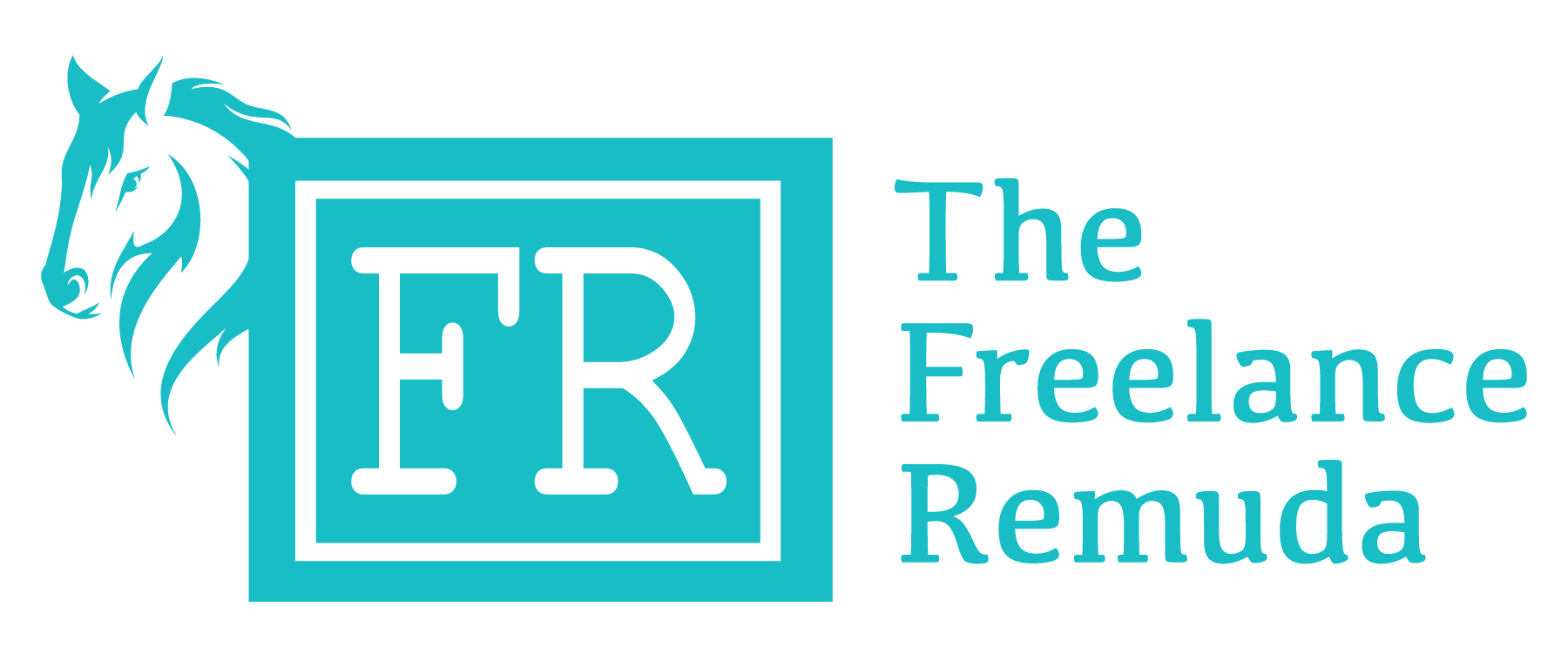Logo tips from a graphic designer
Today we have a special guest post from Faith Peña. She's a fellow freelancer with a background in magazine and event graphic design, and she's also a talented photographer. She's been my friend for decades and she's designed most of my logos over the years. She even designed OUR logo! I asked her for some tips to choosing the right logo, and she shared them below. -Abigail
By Faith Peña
Creating a logo for your business can be a very fun process - there’s so many fonts and colors to choose from and it’s easy to throw everything together to see what fits. However, it can also become a chore if you’re indecisive or just have TOO many fonts and colors to choose from. Here are some tips on figuring out what you should look out for and narrowing it down when designing or choosing a logo.
- First and foremost: choose the typeface very carefully!
Do NOT use Papyrus or Comic Sans! For one, people will just make fun of you for using it because those fonts are used way too often and there’s literally no way of making it look classy and professional. Dig into font families (regular, italic, bold, black) and mix and match the same family for a great look. Match that typeface up with an opposite family - a san serif to a serif, a script to a slab, etc. So much variety can be found with just using two fonts and their whole families. Avoid using more than 2 typefaces in a single logo. - Don’t make the logo too busy.
Logos should be stripped down to the very basics - every single element of what you do doesn’t have to be represented in a tiny design. When the logo is shrunk down, can you still easily identify what it says? Make an overcomplicated logo at first, and then strip it down. - Negative space is okay!
This goes for a logo as well as website design. Designs need breathing room, and if you fill up every possible square inch with stuff, then people will feel overwhelmed. When a logo doesn't have its needed white space, people will look elsewhere - on the page, on another site - for some breathing room. Take some time and see if your design is too cluttered or too basic. - Make sure the logo translates well
This could mean translates well to a one color logo (black for printing purposes), or that it becomes a square version easily. Most social media sites nowadays call for a square profile photo. If your business has a social media account, make sure there's elements from the logo you can pull out and REALLY simplify it by shrinking it down. As with translating it to black, often times if you have colors overlap then change everything to black, your design now looks like a giant blob of black. Elements of the logo will need to have some kind of outline to break it apart from other elements. - Think creatively.
Just because you’re a photographer doesn’t mean you need a camera in the logo; just because you’re a writer doesn’t mean you need a pen and paper in the logo; just because you're a 5k race doesn't mean you need a foot print. Take those norms and throw them out the window and don't think you need to be so literal. Listen to what others think about your logo and think about the criticisms and critiques. Your aunt commenting, “That’s just not my style” to your logo won’t mean as much as, “I can’t read your company name well.” Be smart about what critiques to listen to. Also, remember that the most people you ask the most critiques you will get and the more confused you could possibly become. If you're designing the logo yourself, or have had a heavy hand in developing it, don't take criticisms to heart! Realize they're giving their own input and aren't criticizing you as a person.
In the end, it’s YOUR logo and YOUR decision (unless you’re using Papyrus or Comic Sans. In that case, I'm nixing it for you).Don't underestimate color
Know WHY you’re choosing the colors you are which goes along with knowing your target audience. You might love certain color combinations (I love browns and blues together), but those colors might come off drab if designing a logo for kids clothing.- Know your competition
What kind of logo does your competition have? What colors are very common in your field? Are there any colors common in your field? Stalk the competition and see what's already out there and work from there using the tips found here.
Realize a logo is a brand’s identity - not just a bunch of shapes, colors, and text that have come together. Chances are everything else within your identity will be a play off of the logo itself. Find something strong enough that can be carried uniquely throughout the business. All those other elements will solidify your brand.

